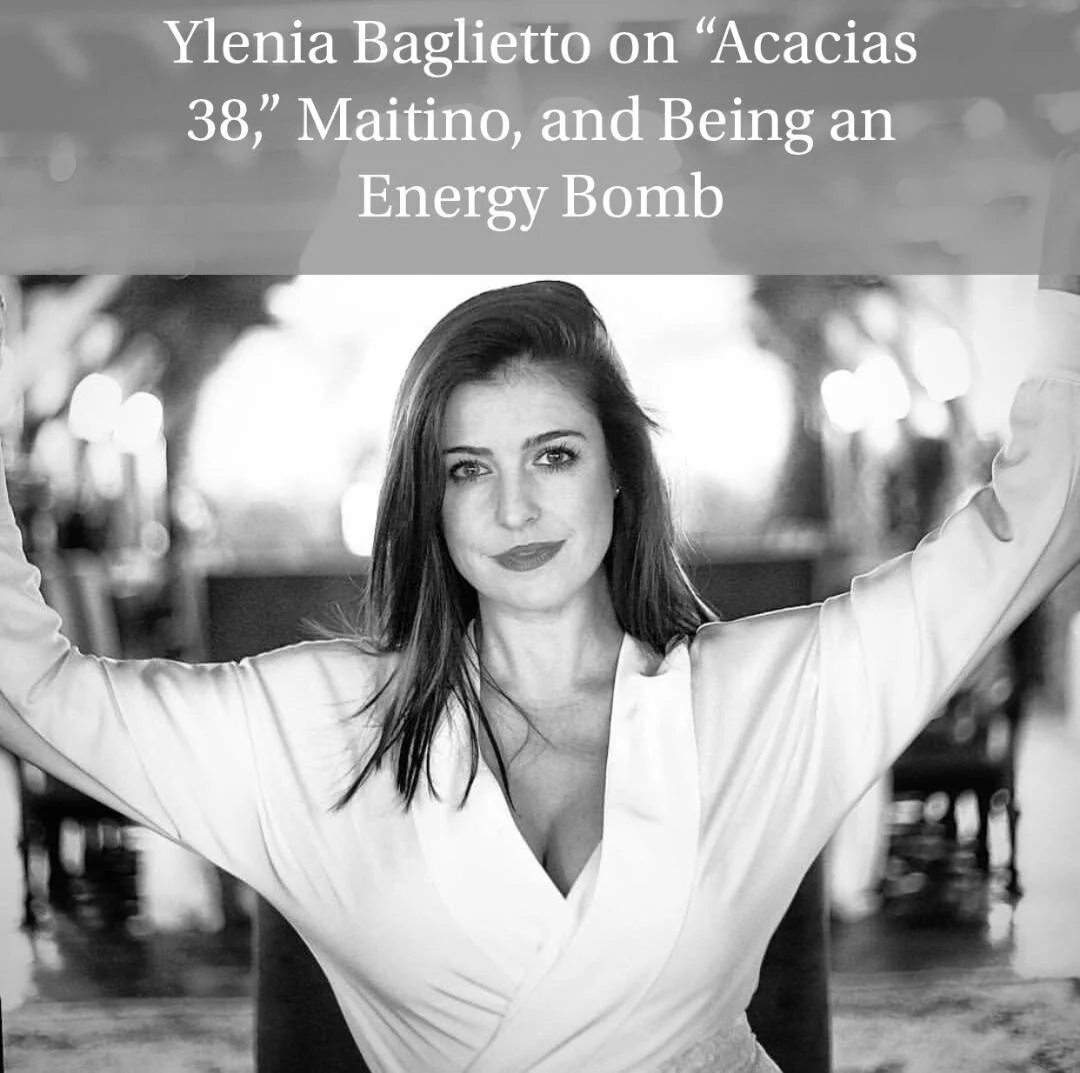Per my spoon theory, there are three “spoon” types: big spoons, little spoons, and bispoonals. While the roles of big and little spoons are self-evident, “bispoonals” are more fluid. They can act as either a big spoon or a little spoon depending on the needs of their partner. For the most part—excepting bispoonals—two of the same spoon type seem unlikely to go well together in the long term.
Read MoreWhile 14% of queer female characters were killed internationally in 2016, by 2018 that number had dropped to only 3% (although still 8.6% in the US). But in some ways, the focus on Bury Your Gays was an identification of a symptom without recognizing the underlying illness: the lesbian unhappy ending problem. Per Autostraddle’s infographic, only 8% of queer female characters on US shows end well.
Read MoreEn What About Dat? escribimos de Maitino. Ecribimos del mundo del fandom Maitiner, y por eso conversamos Ylenia Baglietto (Maite Zaldúa) pero, como se ha repetido hasta el cansancio estas últimas dos semanas, Maitino no es solo una actriz. Es por eso que no podíamos dejar pasar más tiempo sin traerles una mirada más cercana de Camino Pasamar y de la mujer que la le da vida, Aria Bedmar. En una amena conversación, nos ha contado sobre cómo ha sido interpretar este papel, sus deseos para el futuro del personaje y más o menos que se nos viene en las próximas semanas. ¡Asi que abróchese cinturones y disfruten el viaje!
Read MoreThe following article is a story about Argentinian telenovelas, Latin American societal attitudes towards homosexuality, and queer representation. It is also the story of how one awesome Argentinian telenovela, “Separadas,” quietly became the most lesbian thing on Spanish language television in 2020. Because the two stories, it turns out, are one and the same. How “Separadas” is Intentionally and Unintentionally the Gayest Thing on TV
Read MoreNo es ningún secreto que aquí en WhatAboutDat nos encanta la televisión en español. Desde Chile a México, de Argentina a España, si hay mujeres queer, estamos ahí con palomitas de maíz. Una de nuestras mejores elecciones en este momento, en español o no, es la historia lésbica de "Acacias 38", una telenovela española. "Maitino", el acrónimo de Maite Zaldúa (Ylenia Baglietto) y Camino Pasamar (Aria Bedmar), cuenta la historia de una artista y su joven estudiante que se enamoraron en la España de 1913.
Read MoreIt’s no secret that we here at WhatAboutDat love us some Spanish language TV. From Chile to Mexico, Argentina to Spain, if it’s got queer women, we’re there with popcorn. One of our top picks right now—in Spanish or otherwise—is the queer storyline on “Acacias 38,” a Spanish soap opera. “Maitino,” the portmanteau for Maite Zaldúa (YlePHOTnia Baglietto) and Camino Pasamar (Aria Bedmar), tells the story of an artist and her young student falling in love in 1910s Spain.
Read MoreEcosistema: Una gran comunidad de organismos vivos que viven en una red interconectada en una relación simbiótica y equilibrada entre sí.
Visto científicamente, los fandoms de la televisión son ecosistemas. Son comunidades vibrantes, coloridas y dinámicas que conectan a las personas a través del tiempo y la geografía en una red adaptativa y en constante cambio. Como todos los ecosistemas, son simbióticos: los fans obtienen energía del programa de televisión que aman, que luego reflejan de nuevo en el sistema. El programa y las actrices asociadas con él absorben la energía de los fans y la canalizan hacia una mayor producción en un ciclo de retroalimentación interativa. O, para usar una analogía diferente, la relación fan-show es como un fuego en un día frío: cuanto más se acumulan los fans, como la madera, más se calienta arde el fuego y mas calido se vuelve. Como señaló recientemente un fanático de la música, los fanáticos son esenciales para el éxito de un proyecto, pero los fandoms llevan ese éxito a niveles estratosféricos.
Read MoreEcosystem: a large community of living organisms that live in an interconnected network in a symbiotic, balanced relationship to each other.
Looked at scientifically, TV fandoms are ecosystems. They are vibrant, colorful, dynamic communities that connect individuals across time and geography into an ever-changing, adaptive network. Like all ecosystems, they are symbiotic: fans derive energy from the TV show they love, which they then reflect back into the system. The show and the actresses associated with it absorb this fan energy and channel it into further production in an iterative feedback cycle. Or to use a different analogy, the fan-show relationship is like a fire on a cold day: the more wood fans pile on, the hotter the fire burns, and the warmer they get. As a music fan recently noted, fans are essential to the success of a project, but fandoms take that success to stratospheric levels.
Read MoreAs a market segment, the overall LGBT community punches above its weight. The purchasing power of the American LGBT community was estimated at $965 billion in 2018, making the queer community’s “pink dollar” the strongest of any minority group in the US.
Read MoreSeveral years ago, I made the following argument: TV shows can drastically increase the size of their viewership by adding a well-written and well-acted lesbian storyline. This is because well-publicized, popular queer femalecouples accessible internationally through YouTube or other streaming can rally domestic queer audiences while simultaneously drawing in hundreds of thousands of global viewers in a way that the show’s heterosexual pairings—except in extremely rare circumstances—don’t. To support my argument, I used four case studies: an American daytime soap opera, a primetime sci-fi drama on an American broadcast network, a Brazilian telenovela, and a supernatural Western horror on an American cable network.
Read MoreArchetype Footwear is an official sponsor of What About Dat? Media. We look forward to building a relationship with the WAD community.
Read MoreBy now, everyone knows the story. The wedding planning website Zola.com submitted to the Hallmark Channel six wedding ads, four of which featured a wedding between a same-sex female couple. After one of the ads ran in December, the conservative Christian organization One Million Moms—a subsidiary of the American Family Association, one of the nation’s leading anti-LGBTQ groups—gathered a petition with 35,009 signatures and complained directly to Bill Abbott, CEO of Crown Media Family Networks, Hallmark's parent company, about both the ads and Abbott’s publicly expressed “openness” to Hallmark airing LGBT content. Crown Media responded by pulling the four lesbian ads but not the two straight ads.
Read MoreWhither LGBT Representation in Young Adult Literature?
If you accept the numbers at face value, it looks like LGBT representation in Young Adult (YA) fiction has been steadily on the rise the last few years. According to data compiled by author Malinda Lo, in 2009, mainstream American publishers only published 27 LGBT YA books. In 2017, the number increased to 84. In 2018, it was 108. The problem, however, is that when looked at proportionally, this growth is only negligible at best. Here’s why:


